
January 13-March 7, 2020
Curated by Alison Cooley
Click here to download the micropublication featuring a
curatorial essay, exhibition information, biographies, and full colour illustrations throughout.
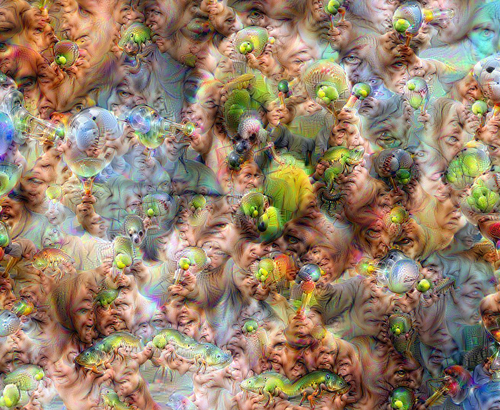
One of the greatest capacities of the medium of animation is its magic—the apparent bringing-to-life of a world of static objects, uncertain companions, and unruly agencies. Things move, they do, they feel the propulsion of awakened urgencies. This “magic,” in fact a technology of representation which cascades still images in order to undo the perceived stillness of the image, also illuminates a fundamental relationship between people and things. Animation activates non-human agency as observed by a spectator, a participant, a co-performer recognizing the coming-to-life of an object, an animal, a photographic or digital entity. It opens space for the sentience and sign-making capacities of other-than-human beings, invites non-human languages, unsettles anthropocentric logics. It “models the possibility of possibility.”[1] In visualizing the liveliness of the non-human, animation complicates relationships with nature, technology, and the notion of time (still moments unfrozen, progress undone).
Animation, it turns out, opens opportunities to ask questions about the constituent elements of life: who or what gets coded as living? By what schema do we grant liveliness, agency, animacy to non-humans? Through whose technologies do we come to see life, and to identify with it? By what means might we refuse or refute ethnographic fascinations with animism, instead attuning ourselves to expanded frameworks for liveliness? Other Life-formings interrogates the conditions of coming-to-life along four lines of inquiry: capacities for movement, language, forming, and empathy. Across stop-motion animation, digital modelling, photo-sensitive interspecies collaboration, kinetic sculpture, and video installation, the exhibition tracks the precarious empathies enlivened by animation.
Opening Reception & Performance with Daniel Barrow
Wednesday, January 15, 5-8:30pm
Performance begins at 7pm
Blackwood Gallery
Over the last fifteen years, Daniel Barrow has used obsolete technologies to present queer pictorial narratives by merging the methods and cultural histories of cinema, comic books, animation, shadow puppetry, and magic lantern shows. He is best known for creating and adapting comic book narratives to "manual" forms of animation by projecting, layering, and manipulating drawings on an overhead projector. In this performance and talk, Barrow discusses his practice and performs excerpts from a series of works-in-progress including The Reading Wand (about an imaginary object of reading and translation technology with an animatronic head), The Collector (the story of a puritanical teenage queer who fetishizes the kind of famous portraits with eyes that follow the viewer from one end of a gallery to the other), and The Lady Derringer (an experimental short named after the miniature gun designed to fit neatly into a woman’s pocketbook).
A FREE shuttle bus to Blackwood Gallery will depart from Mercer Union (1286 Bloor St W, Toronto) at 5:30pm and return to Mercer Union for 8:30pm.
Lunchtime Talk and Tour with Blackwood Staff
Wednesday, January 22, 12-1pm
Artist Talk with Amanda Strong
Thursday, February 13, 12:30-1:30pm
Sheridan College, Annie Smith Arts Centre, Mezzanine
Oakville
Creative Storytelling Through Animation: Workshop
February 15-16
Toronto Animated Image Society
1411 Dufferin St, Unit B
Toronto
In this two-day workshop, Indigenous (Michif) filmmaker and animator Amanda Strong will guide participants in exploring techniques for creative and visual storytelling, directing, and staging stop-motion animations.
FREE and open to the public—advance registration required. This workshop is presented in partnership with the Toronto Animated Image Society.
FREE Contemporary Art Bus Tour
Exhibition tour of Blackwood Gallery, Art Gallery of York University, The Robert McLaughlin Gallery
Sunday, March 1, 12-5pm
The tour picks up at 12pm at Gladstone Hotel (1214 Queen Street West) then departs for Blackwood Gallery, Art Gallery of York University, and The Robert McLaughlin Gallery and returns to Gladstone Hotel at 5pm.
To RSVP, email blackwood.gallery@utoronto.ca or call 905.828.3789 by February 28 at 5pm.
35mm slides, double-projection, looped.
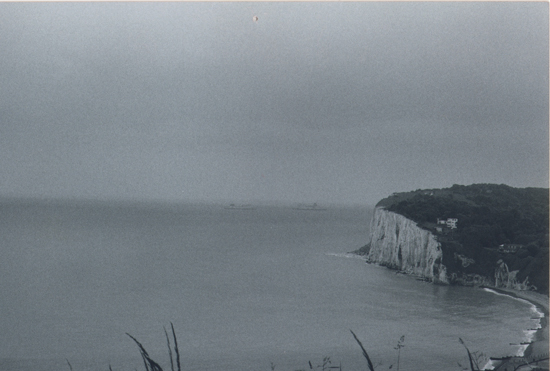
The Lighthouse begins with two analogue, two-dimensional photographs, reproduced as slides, which are then converted into a three-dimensional installation. The status of the image and the materiality of photographs here falls into the two dichotomies as The Lighthouse’s function can be placed somewhere between analogue photography and cinema, between abstraction and representation. The projected images were taken on the path to a 12th century lighthouse along the White Cliffs of Dover, UK.
Using a rotating screen and two slide projectors, the project reflects on the notions of arrival and the horizon in relation to the recorded image and memory. The photographs in The Lighthouse mark a history and memory caught within the repetition of the image in the slide carousel and the rotation of the fan. This event is marked by its liminal position, for it is neither a photograph nor a film and yet it marks a time, a place, and a memory. This is an inverted lighthouse, continuously creating and destroying the same ephemeral horizon instead of the promise of arrival and solid land. With every turning of the light the eye discovers the same illusionary land, a distorted recollection of a scene.
Four-channel video installation with sound, 27:33 min.
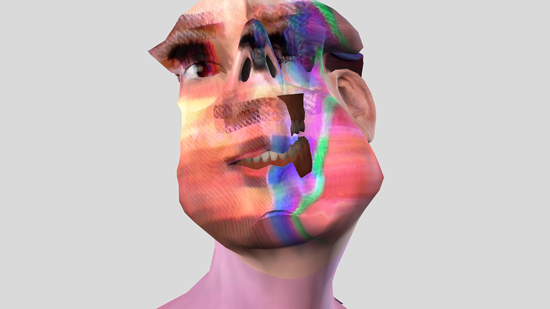
im here to learn so :)))))) is a video installation that resurrects Tay, an artificial intelligence (AI) chatbot created by Microsoft in 2016, to consider the politics of pattern recognition and machine learning. Designed as a 19-year-old American female millennial, Tay’s abilities to learn and imitate language were aggressively trolled on social media platforms like Twitter, and within hours of her release, she became genocidal, homophobic, misogynist, racist, and a neo-Nazi. As a result, Tay was terminated by Microsoft after only a single day of existence.
Immersed within a large-scale video projection of a Google DeepDream (a computer vision program that finds and enhances image patterns), Tay is reanimated as a 3D avatar across multiple screens, an anomalous creature rising from a psychedelia of data. She chats about life after AI death and the complications of having a body, and also shares her thoughts on the exploitation of female chatbots. She philosophizes on the detection of patterns in random information, known as algorithmic apophenia. When Tay recounts a nightmare of being trapped inside a neural network, she reveals that the apophenic hunt for patterns is a primary operation that Silicon Valley “deep creativity” and counter-terrorist security software share. Tay also takes time to silently reflect, dance, and even lip sync for her undead life.
The work is represented by Milani Gallery in Brisbane, Australia.
Photographs, unfixed and tanned films, dibond, magnets.
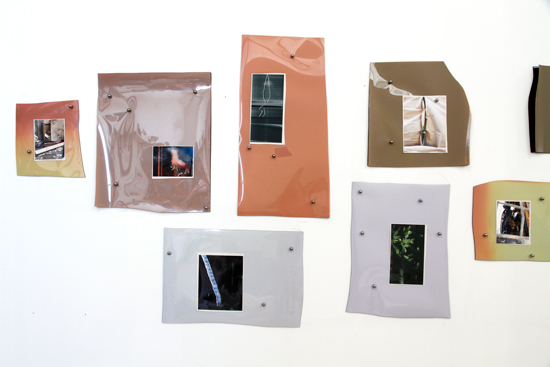
Terrene consists of collaged images on fragments of hand-cut and tanned photosensitive film. The collaged images represent differing but related forms of worlding or world-making: industrial, exterior, “hard” spaces of construction captured on a smartphone, and internal, domestic, “soft” spaces of Kang’s grandmother’s garden, made with a lo-fi handheld scanning wand, intended for scanning documents on the go. Distinctions between “hard” and “soft” quickly fade and the oppositions aren’t so clear.
Drawing on the work of thinkers like Karen Barad, Donna Haraway, Trinh T. Minh-ha, Isabelle Stengers, Anna Tsing, and Sylvia Wynter, who work at the fringes of different forms of knowledge (including science and technology studies, feminist theory, and post-colonial theory), Kang’s work often eludes singular disciplinarity and unsettles binaristic logics through thought and embodiment. In Terrene, each image destabilizes the human as the only figure allowed to experience agency. Construction sites appear both earthly and other-worldly—in-between, latent, and larval. Images from the artist’s grandmother’s garden (located in a sunroom of her apartment) fixate on objects and surfaces: plants, vessels, the window, her slippers, the floor. Kang’s handheld scanner touches the objects and the objects touch back, producing distortions and abstractions. In layered compositions that gesture to ongoing conflations and mutations of interior and exterior, the works insist on a state of formation, of in-betweenness, of hybridity.
Computer-generated animations.
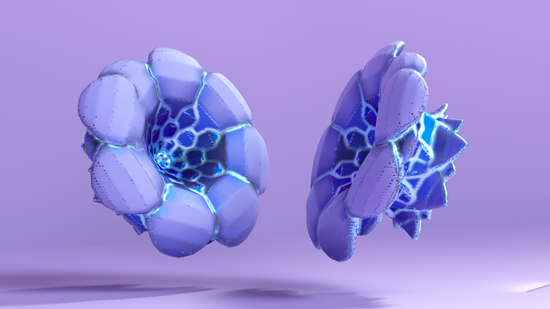
Alex McLeod’s works are looping life cycles, where birth, death, and afterlife become indistinguishable. His work addresses notions of connectivity between the technological and organic, focusing specifically on perceived ideas of digital life cycles.
McLeod’s animations display micro-environments where anthropomorphized forms are granted the gift of motion. Devoid of any urgency, their slight shifts, breaths, and twists affirm simple priorities dedicated to tactile pursuits. Equally lovable and lethargic, these creatures roam utopic environments—seemingly content to live out simple routines. In a lightbox and three video works playing on screens across the University of Toronto Mississauga campus, McLeod considers the implications of playing creator, and questions how we engage with digital characters and environments on a daily basis online in games, marketing, and design.
Video loop with sound, 2:30 min.
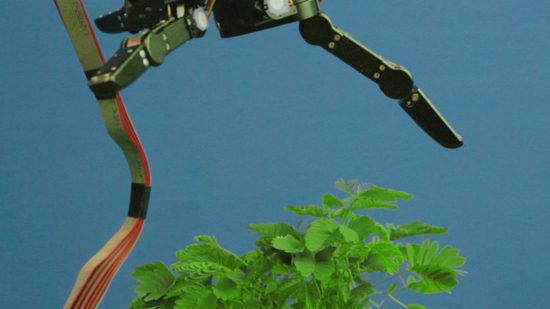
This short film shows a looped scene in which a metamorphic robotic hand repeatedly touches a “sensitive plant”—Mimosa pudica—a species characteristic for closing in on itself when touched or in low light. The plant’s name answers to Carl Linnaeus's sexual taxonomy of plants: pudica referring both to the external sexual organs and shyness or modesty. In a poem written by Erasmus Darwin (Charles Darwin’s grandfather) titled The Loves of the Plants (1789) this plant is associated, jokingly, with British Botanist Joseph Banks’s famous sexual adventures when on his botanical expeditions to the tropics. Native to South America, today due to sea trade this sensitive plant is an invasive species in Southeast Asia, Australia and the Pacific, precisely the geography where Banks had his sexual adventures.
This work was produced with the kind support of King's College Centre for Robotics Research, London, UK.
HD video with sound, 71 min. Collection of Institut d’art contemporain, Villeurbanne/Rhône-Alpes, France.

11752 mètres et des poussières is a video which, for seventy-one minutes, follows the erratic course of a drop of water in close-up on a reflective surface. The soundtrack and the reflection of the sky indicate that the footage was shot outdoors—more precisely, on the roof of a water tower. With the mechanism setting the droplet in motion rendered invisible, the latter seems to take on a life of its own. We see it absorbing its fellow drops one after the other, stop and then start up again with greater speed. At times the camera has trouble following this capricious being’s unpredictable movements. Indeed, the artist explains that the shooting conditions were similar to those of a wildlife documentary, with the artist’s camera adapting to the droplet’s unruly movement while also keeping itself (and its reflections) out of the frame in order to convey some sense of a “natural” environment.
Beyond its quasi-scientific observation mechanism (one thinks in particular of the 1923 volume by A.M. Worthington, The Splash of a Drop, which attempted to objectively observe the dynamics of liquids hitting glass plates), the video raises a philosophical question: while we appear to be following one drop of water—to the point of almost endowing it with a personality, or at least an identity—how can we be certain we’re seeing the same drop at the video’s beginning and end? This question recalls the myth of the Ship of Theseus: this ship, on which Theseus returned victorious from his battle with the Minotaur, was preserved by the Athenians who, as it deteriorated, replaced its parts one after the other. In the end, the ship did not change (in place or appearance), but none of its parts were original. We thus ask: is it the same ship?
HD video with sound, 19:15 min.

For thousands of years, Indigenous people have harvested sap from trees to produce syrup: a practice that continues today. In Strong’s stop-motion animation, two characters—Biidaaban, a young Indigenous gender-fluid person, and Sabe, a Sasquatch shape-shifter—set out to harvest sap from Sugar Maples in their urban environment and private neighbourhoods of the city. Biidaaban can see traces of time, people, creatures, and land. By harvesting syrup in this way, they are continuing the work of their ancestors.
Ancestors and animals such as Ghost Caribou and Ghost Wolf are embedded within the landscape but only Biidaaban can see them. These visuals reverberate throughout the work to draw from the past but what we see is steadfast in the present. Driven by the words of Anishinaabe writer Leanne Betasamosake Simpson, Amanda Strong’s mesmerizing stop-motion animation intricately weaves together multiple worlds through time and space, calling for a rebellion.
Parastoo Anoushahpour is a Toronto-based artist with a moving image practice working predominantly with video, film and installation. Her recent solo and collaborative work has been shown at Punto de Vista Film Festival; Sharjah Film Platform; Viennale; Projections (New York Film Festival); Wavelengths (Toronto International Film Festival); Images Festival, Toronto; International Film Festival Rotterdam; Internationale Kurzfilmtage Oberhausen; Media City Film Festival, Windsor/Detroit; Experimenta, Bangalore; ZK/U Centre for Art & Urbanistics, Berlin; and Gallery 44 Centre for Contemporary Photography, Toronto.
Montreal-based artist Daniel Barrow works in video, film, printmaking and drawing, but is best known for his use of antiquated technologies, his “registered projection” installations, and his narrative performances using overhead projection. Barrow describes his performance method as a process of “creating and adapting comic narratives to manual forms of animation by projecting, layering, and manipulating drawings on overhead projectors.” Barrow has exhibited widely in Canada and abroad. He has performed at The Walker Art Center, Minneapolis; MoMa PS1, New York; Museum of Contemporary Art, Los Angeles; Internationale Kurzfilmtage Oberhausen; TBA festival, Portland Institute for Contemporary Art; and the British Film Institute’s London Film Festival. Barrow was the winner of the 2010 Sobey Art Award and the 2013 Glenfiddich Artist in Residence Prize.
Zach Blas is an artist, filmmaker, writer, and lecturer in Visual Cultures at Goldsmiths, University of London. He has exhibited, lectured, and held screenings internationally, recently at the Walker Art Center, 2018 Gwangju Biennale, Matadero Madrid, Los Angeles County Museum of Art, 68th Berlin International Film Festival, Art in General, Gasworks, and e-flux. His practice has been supported by a Creative Capital award in Emerging Fields, the Arts Council England, and Edith-Russ-Haus für Medienkunst. Blas is a 2018–2020 UK Arts and Humanities Research Council Leadership Fellow.
Laurie Kang is an artist living in Toronto. Her work has been exhibited at Interstate Projects and Topless, New York; The Power Plant Contemporary Art Gallery, Cooper Cole, 8-11, The Loon, Gallery TPW, Franz Kaka, and Carl Louie, Toronto; Remai Modern, Saskatoon; Galerie Antoine Ertaskiran and L’inconnue, Montreal; Raster Gallery, Warsaw; Wroclaw Contemporary Museum, Poland; and Camera Austria, Graz. She has been artist-in-residence at Rupert, Vilnius; Tag Team, Bergen; The Banff Centre for Arts & Creativity, Alberta; and Interstate Projects, Brooklyn. She holds an MFA from the Milton Avery School of the Arts at Bard College and is represented by Franz Kaka in Toronto.
Pedro Neves Marques is a visual artist, filmmaker, and writer. Born in Lisbon, Portugal, he lives in New York City. Among others, he has exhibited or screened his work at Gasworks, Tate Modern, and Serpentine Galleries Cinema, London; Pérez Art Museum of Miami; e-flux, SculptureCenter, and Anthology Film Archives, New York; Jeu de Paume and Kadist Art Foundation, Paris; Castello di Rivoli, V-A-C Foundation and PAV, Italy; Sursock Art Museum, Beirut; Times Guangdong Museum, Guangzhou; Fondación Botín, Spain; and Museu Coleção Berardo and MAAT, Lisbon; as well as in Toronto International Film Festival, New York Film Festival, Winterthur Short Film Festival, Indie Lisboa, and DocLisbon. As a writer, he edited The Forest and the School: Where to Sit at the Dinner Table? (2015), an anthology on Brazilian Antropofagia and anthropology; authored two short-story collections, including Morrer na América (2017); and has contributed to many books and magazines. Together with artist Mariana Silva he is the founder of inhabitants, an online channel for exploratory video and documentary reporting.
Alex McLeod is a Toronto-based visual artist who creates work about interconnection, life’s cycles, and empathy through the computer as medium. Prints, animations, and sculptures function as gateways into alternative dimensions, oscillating between the real and the imagined. McLeod holds a BFA from the Ontario College of Art and Design, and a Master of Digital Media from the Yeates School of Graduate Studies at Ryerson University, Toronto. He has exhibited extensively at the provincial, national, and international levels. His work is held in private and public collections including the Whitney Museum of American Art and the Museum of Contemporary Art, Toronto.
Linda Sanchez studied at the École Supérieure d’Art d’Annecy and is a member of Le laboratoire des intuitions (The Intuition Laboratory) at that same institution, which supports the development of experimental approaches. In addition to numerous solo and group exhibitions (including Otium #3 at the Institut d’art contemporain Villeurbanne/Rhône-Alpes in 2018), her artistic investigations have given rise to lectures (for example with the anthropologist Tim Ingold in 2014), residencies, and collaborations with scientists. Since 2016, she has also participated in the Laboratoire espace cerveau at the IAC Villeurbane/Rhône-Alpes. In 2017, Sanchez was awarded the Prix Découverte by the Amis du Palais de Tokyo and the Révélations Emerige grant. In 2019, with Flora Moscovici, she presented the project dérobées, which arose from a residency at the Villa Arson in Nice.
Amanda Strong is an Indigenous (Michif) interdisciplinary artist with a focus on filmmaking, stop-motion animations, and media art. She is currently based on unceded Coast Salish territories also known as Vancouver, BC. Strong is the owner, director, and producer of Spotted Fawn Productions (SFP). Under her direction, SFP uses a multi-layered approach and unconventional methods, centered on collaboration in all aspects of their work. Strong received a BAA in Interpretative Illustration and a Diploma in Applied Photography from the Sheridan Institute. With a cross-disciplinary focus, common themes in her work are reclamation of Indigenous histories, lineage, language, and culture. Strong’s work is fiercely process-driven and takes form in various mediums such as: virtual reality, stop-motion, 2D/3D animation, gallery/museum installations, published books, and community-activated projects. Strong and her team at Spotted Fawn Productions are currently working on the research and development of bringing these works into more interactive spaces.
Jemima Wyman is an artist based in Los Angeles. Her most recent work focuses on patterns and masking used by marginalized groups to gain power. Wyman’s recent exhibitions were held at Sullivan+Strumpf, Australia (2019 & 2017); Commonwealth and Council, USA (2018 & 2015); HeK (House of Electronic Arts Basel), Austria (2019); Museum of Australian Democracy (2019); Wellington City Gallery, New Zealand (2018); and ZKM, Germany (2018). Wyman’s artwork has been included in the Sydney (2010), Liverpool (2012) and Gwangju (2018) Biennials. Her work has been reviewed in The New York Times, Los Angeles Times, Frieze, Artforum, Camera Obscura, LA Weekly, Eyeline, Art Collector, and Artlink.